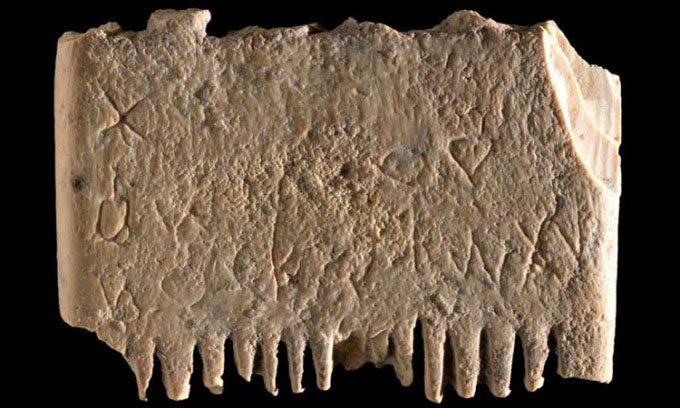The luxurious comb serves two purposes: one side features six wide teeth for detangling hair, while the other side has 14 closely spaced teeth for removing lice.
Scientists have identified an inscription believed to be the oldest complete sentence written in the alphabetic script on an ivory comb: “May this ivory remove lice from hair and beard.” This luxurious item was excavated at Lachish, a city-state of the Canaanites in the 2nd millennium BCE, and was the second most important city of the Kingdom of Judah. The new study was published in the Jerusalem Journal of Archaeology on November 9.

The ivory comb, designed for removing lice and detangling hair, dates back to around 1700 BCE. (Photo: Dafna Gazit/Israel Antiquities Authority)
“The inscription is very ‘human.’ You have a comb, and on it, you write your wish to eliminate lice from hair and beard. Today, we have all sorts of sprays and modern treatments, but they didn’t have those back then,” said Professor Yosef Garfinkel, an archaeologist at the Hebrew University of Jerusalem and a director of the Lachish excavation.
The ancient comb could be made from wood, bone, or ivory, but the ivory comb was a luxurious import, expensive because there were no elephants in Canaan at that time. The comb measures 3.5 cm x 2.5 cm and was discovered in 2017. However, the shallow engravings on its surface were only identified last December. Analysis confirmed that the inscription is in Canaanite, the earliest alphabetic script, which emerged about 3,800 years ago.
Scientists could not apply carbon dating methods to the comb, but they estimate it was made around 1700 BCE. The comb is worn and missing teeth, but the remaining part shows one side with six wide teeth for detangling hair and the other side with 14 closely spaced teeth for removing lice and their eggs. Upon examining the comb under a microscope, the research team also found fragments of the outer shells of lice nymphs measuring half a millimeter.
“The fact that the inscription reflects ordinary life is fascinating. Throughout human history, lice have always been a persistent problem. This inscription reveals that even the wealthy and famous in ancient times were not free from this issue. We hope this inscribed comb was useful in performing its intended task – removing those annoying insects,” shared Christopher Rollston, a professor at George Washington University.

















































